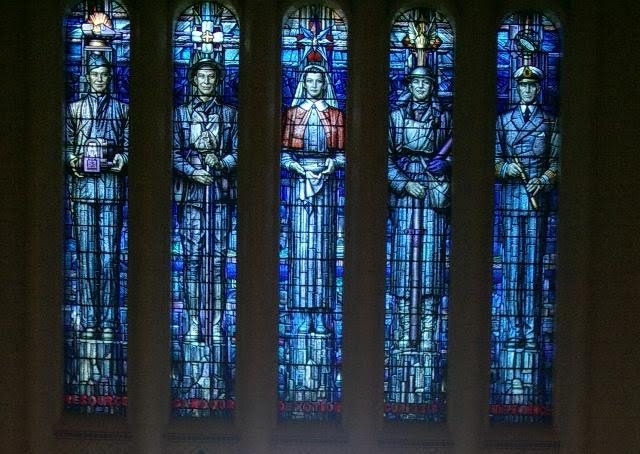Every Year we put something in Devotion News to mark ANZAC Day. Lodges all over Victoria, and no doubt Australia and New Zealand, conduct ceremonies like the Vacant Chair and the stirring sound of the Last Post can be heard within Masonic Buildings. Grand Masters lay wreaths like the Masters of their subordinate lodges and we all pause in silence to remember and give thanks. For the benefit of our international readers who have never heard this term, the Australian and New Zealand Army Corps (ANZAC) was born in World War One when elements of both countries were sent to Turkey in the then Ottoman Empire. The goal was to occupy the Gallipoli Peninsula with the intent of opening the Dardenells to the Black Sea under a plan conceived by Winston Churchill - then First Lord of the Admiralty. It failed in “gallant defeat’. On the 25th of April 1915 the British Units landed and the ANZACs being dominions of the Empire were there.. ANZAC Day falls on the anniversary of the landing and today broadly commemorates all Australian and New Zealanders who have served on active duty in the Armed Forces, remembering them all. Opinions on the day vary, but for me it is a day of remembrance of the sacrifice of those who served and won peace.
Over Easter we traveled to Canberra and my ever understanding partner set me free to wander the Australian War Memorial in Canberra and I thought the photographs I took might make a good photo essay for Devotion News; some appear in the following pages
Lest We Forget.
The Australian War Memorial
The Australian War Memorial (AWM) in Canberra “combines a shrine, a world-class museum, and an extensive archive. The Memorial's purpose is to commemorate the sacrifice of those Australians who have died in war. Its mission is to assist Australians to remember, interpret and understand the Australian experience of war and its enduring impact on Australian society.”
It was conceived by Charles Bean, a War Correspondent and historian. Bean was present at Gallipoli and was mentioned in dispatches but as he was a civilian he was ineligible for the decoration recommended to him.. At one point during the Gallipoli campaign he was shot in the leg but remained in his dugout reporting on the actions at Gallipoli, later using notes to write the Official History of the 1914/1918 war. He saw and reported on Australian troops both at Gallipoli and in Europe.
During WW1 on various fronts, Bean noted that Australian soldiers were devoted collectors of battlefield souvenirs and imagined a museum featuring these objects after the war. But it was not until he had witnessed the carnage on the Western Front in the second half of 1916 that he began to conceive a memorial that would not only house battle relics, but also commemorate those killed. In November 1916 Bean suggested to the Australian Minister for Defense, that photographs and relics of the fighting around Pozières should be put on display in a national museum. After much work, the site we call the Australian War Memorial (AWM) was completed in 1941. Bean's dream of a memorial in recognition of Australian soldiers who fought in the Great War had finally been realised. However, when it was realised that the Second World War was of a magnitude to match that of the First, it was understood that the memorial would have to commemorate servicemen from the latter conflict, despite the original intentions. The Hall of Memory, completed in 1959, could not have fulfilled Bean's dream of commemoration more completely. It adhered to Bean's view that war should not be glorified, but that those who died fighting for their country should be remembered. Bean's moral principles such as this, and the fact that the enemy should not be referred to in derogatory terms, alongside with many others, greatly influenced the philosophical angle that the Australian War Memorial has always taken, and would continue to take. Charles Bean died in 1968.
Here is their spirit, in the heart of the land they loved; and here we guard the record which they themselves made.
Charles Bean, 1948
The AWM is certainly an impressive Shrine and museum and recommended if you visit Canberra – but allow a day to look through. Entry and tours are free.







